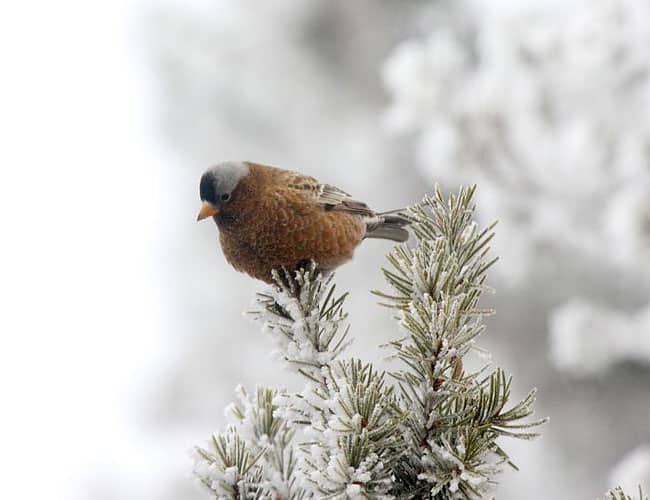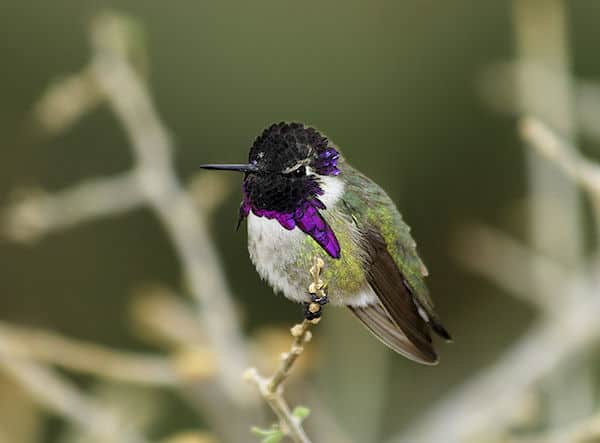Look For
Wilson’s phalarope, a member of the sandpiper family, is the largest of the three phalarope species. Distinguishing characteristics of Wilson’s phalarope include a very thin, straight bill; gray wings; poorly defined facial markings in nonbreeding plumage; and a pronounced white rump.
In breeding plumage, both sexes have dark lines extending from their eyes down the neck. Light shades of rust and cinnamon appear along the front of the neck and noticeably darken along the wings. Females are far more colorful than males.
Listen For
The courtship call is a short, nasal ernt emitted by both sexes, but females seem to increase vocalization when defending males. A low volume and pitched purr call can be heard at close range.
Find It
Wilson’s phalarope nests around wetlands throughout the prairies of North America. They have also been recorded breeding along the Great Lakes shorelines, wetlands in central California, and along the New Brunswick coast. Favorable breeding habitat requires dense vegetation found in marshes; before and after migration the bird is found mainly in open, shallow expanses of water, especially hypersaline lakes in the Great Basin of western states. Wilson’s winters in western and southern South America, where huge flocks can be found along highly saline lakes in the central Andes.
Feeding Behavior
Wilson’s is the most terrestrial of the three phalarope species. Its primary food source is small aquatic invertebrates found in both fresh and saline water, as well as some terrestrial invertebrates. In typical phalarope style, its spins as it forages to bring its food to the surface.
Courtship and Nesting Behavior
Phalaropes are well known for their swapped sex-roles in the breeding process, which takes place between late April and late June. Females engage in stiff competition for mates in the courtship process, then, after laying four eggs, move on to pursue a new mate, leaving the male to incubate.
Nests are usually located in vegetation within 100 yards of a wetland. Males line the nest with surrounding vegetation. The male alone cares for the chicks; within a few hours of hatching, chicks leave the nest and feed themselves.




